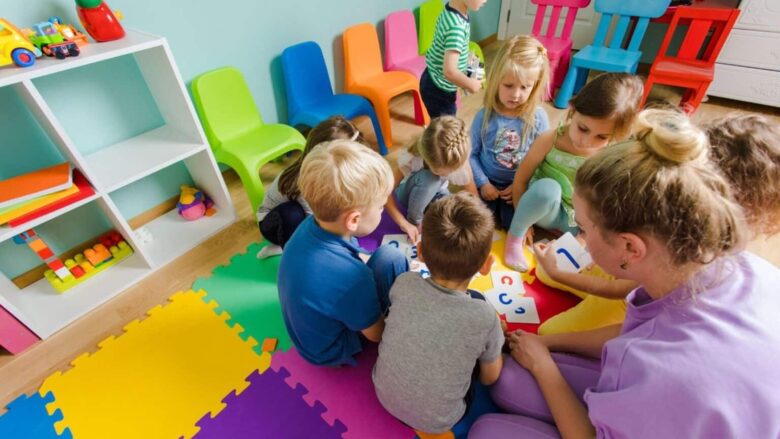Modern parents are committed to raising their children to be environmentally conscious. With climate change and pollution raging, sustainability education is essential for students’ futures. The good news is that teaching your children about the environment doesn’t require a radical lifestyle change or a giant investment. Simply incorporate a few basic principles and meaningful habits into your daily life to help your children respect nature and understand their responsibility to protect it.
This comprehensive guide will help you raise environmentally conscious children who will make responsible environmental choices throughout their lives. From leading by example to building a connection with the environment, these strategies will help your children develop a sustainable lifestyle.
Environmental Awareness for Kids:
Helping children understand how their actions affect the environment is the first step in developing environmental awareness. Children’s natural curiosity makes them ideal candidates for sustainability education. Explain to them how nature is interconnected: how trees produce oxygen, the water cycle, and how waste affects wildlife. Use age-appropriate terms and common phrases. Teach younger children to “protect our planet,” while older children can learn about carbon footprints and renewable energy.
Present environmental principles as exciting discoveries rather than overwhelming concerns. Create interactive learning by asking questions such as, “What happens when we throw away trash?” For instance, consider the impact of polluted homes on animals’ emotions. This approach encourages environmental awareness and critical thinking in children.
Lead by Example:
Children learn much more by observing than by teaching, so parents’ words are the best way to promote environmental awareness in children. When parents set a positive example, children naturally adopt sustainable habits. First, demonstrate and prove your eco-conscious choices. Turn off the lights when you leave the room, use reusable grocery bags, and walk or bike for short trips instead of driving. “I turned off this light because it saves energy and benefits the environment.”
Ask children about eco-friendly shopping or composting, and involve them in your sustainable choices. When parents make environmental protection a priority, children will understand that caring for the world is a family value. Remember: Persistence is key—occasional missteps are inevitable, but consistent commitment to sustainable behavior can send a strong message about environmental protection.
Core Principles: Reduce, Reuse, Recycle
The “3R” principle is the foundation of sustainable living and is easy for children to learn and apply. Teach children to think about “reducing” before they eat. Ask yourself, “Do I need this?” or “Can I borrow instead of buying?” This attitude can help prevent impulse buying and consumerism. Show children how to save energy by taking shorter showers, turning off electronics, and buying sustainable products. “Reusing” becomes fun when children discover creative ways to reuse things.
Turn cardboard boxes into play castles, glass jars into storage containers for craft supplies, or discarded clothing into cleaning rags. These activities encourage creativity and adaptability. Recycling should be considered the last option, following the principles of reducing and reusing. Show children how to separate recyclables in your community and how they are treated in the recycling process. Let children turn the sorting process into a game by having them sort items into bins to reinforce their habits.
Sustainable Consumption Models:
Children learn to make environmentally friendly decisions through rational consumption. Take your children to the grocery store and teach them to read labels, choose local ingredients, and select products with minimal packaging. Talk to your family about the impact of different foods on the environment, and try a plant-based diet. When buying toys or clothing, teach your children to focus on quality over quantity to extend their lives and reduce their impact on the environment.
Consider buying secondhand items, as they are often new, necessary, and inexpensive. Teach your children how to care for and store items. Agree on a rule with your family to think carefully before buying non-essential items to cultivate your children’s patience and thoughtfulness. Teach your children how to research companies’ environmental practices and how they can support sustainable practices. These practices teach children that every purchase is a vote for the world they want.
Connect with Nature:
Regular exposure to nature can promote environmental awareness and a love of the outdoors. Plan regular hiking, camping, and beach trips for your kids to explore nature. Let your kids roam and explore in the park or their backyard. Introduce nature notebooks where kids can draw animals and plants, record the weather, and record observations. This activity will strengthen your observation skills and connect you to nature.
Promote environmental studies by documenting bird migrations, weather patterns, and local wildlife in a citizen science project. Visit national parks, environmental centers, and botanical gardens to teach kids about ecosystems and conservation. Outdoor learning opportunities include identifying local plants and animals, observing seasonal changes, and exploring how humans impact the natural environment. Kids learn that they are part of nature and develop a love of the environment.
Education is Key:
Age-appropriate environmental education builds kids’ knowledge and problem-solving skills to deal with environmental issues. Learn about success stories in climate change, renewable energy, and environmental protection through books, documentaries, and educational websites. Don’t be pessimistic, but choose resources that offer solutions to environmental problems. Encourage children’s curiosity and exploration of marine biology, renewable energy, and conservation. Environmental education can be integrated into math (calculating energy savings), science (ecosystems), and social studies (comparing sustainable practices across cultures).
Visit science museums, renewable energy facilities, and environmental education centers to see sustainability in action. Invite local environmental experts to talk to your family, or join a kid-friendly environmental club. Support schools that teach environmental education and advocate for more comprehensive environmental education. Remember that education should inspire action, so connect new knowledge to ways your child can help.
Community Involvement:
Children learn that protecting the planet requires teamwork and that participating in community environmental activities can have a positive impact. Local cleanup projects allow families to learn about the effects of pollution on wildlife and ecosystems while cleaning up parks, beaches, and neighborhoods. Tree-planting activities can help children learn about reforestation and its long-term effects. Family-friendly environmental organizations offer habitat restoration and wildlife monitoring opportunities. Attend community environmental meetings to teach children how to solve environmental problems through democracy.
Encourage students to learn about permaculture and food systems at farmers’ markets and community gardens. Start a community composting program or tool-sharing system to reduce individual use. These activities teach children that protecting the environment is a shared responsibility and that their actions can make a difference. Community involvement fosters social connections and teaches children that protecting the environment can bring people together to create a better future.
Long-Term Impact:
The environmental habits and values that children develop in childhood have long-term effects. As they grow, environmentally conscious people naturally consider ecological issues in their decisions about employment, housing, and family planning. Engaging in hands-on environmental experiences cultivates problem-solving and innovation skills, equipping children for future careers in green and sustainable industries. Environmental education fosters empathy and global awareness by teaching children how environmental issues affect communities and animals around the world.
These children often become environmental leaders in schools, businesses, and their communities, further amplifying the benefits of early environmental education. Children who learn environmental skills early in life will have lower energy bills and lower energy consumption throughout their lives. Most importantly, environmentally conscious children believe in positive change and can help solve problems. This optimistic attitude, practical skills, and deep environmental knowledge form the foundation for lifelong environmental stewardship.
FAQs:
1. How early should I start cultivating my child’s environmental awareness?
Turning off lights, watering plants, and picking up trash on walks can teach young children about the environment. Young children love nature and can understand “taking care of our planet” through daily activities and age-appropriate explanations.
2. What if my child is overwhelmed by environmental problems?
Focus on solutions and beneficial activities, not environmental problems. Discuss how your family can help, celebrate their small steps, and share environmental success stories. Always use age-appropriate language and provide practical answers to encourage environmental awareness.
3. How can I get children who don’t like nature interested in environmental education?
Connect environmental topics to your child’s interests. For art, you can do crafts with nature; for cooking, you can grow herbs or vegetables; for technology, you can use eco-friendly apps or games. Find an entry point that suits their personality and gradually guide them into environmental activities.
4. What are some affordable, sustainable parenting methods?
You can save money by growing your vegetables, buying secondhand goods, reducing your energy consumption, and using reusable products. Reducing and reusing activities like nature walks, crafting recycled toys, and gardening are not only affordable but also educational.
5. How do I cope with family members who don’t care about environmental changes?
Recycling and saving energy are simple and harmless actions that everyone can do. Lead by example and emphasize some general benefits, such as saving money or spending more time outdoors. Don’t preach; choose sustainability.




